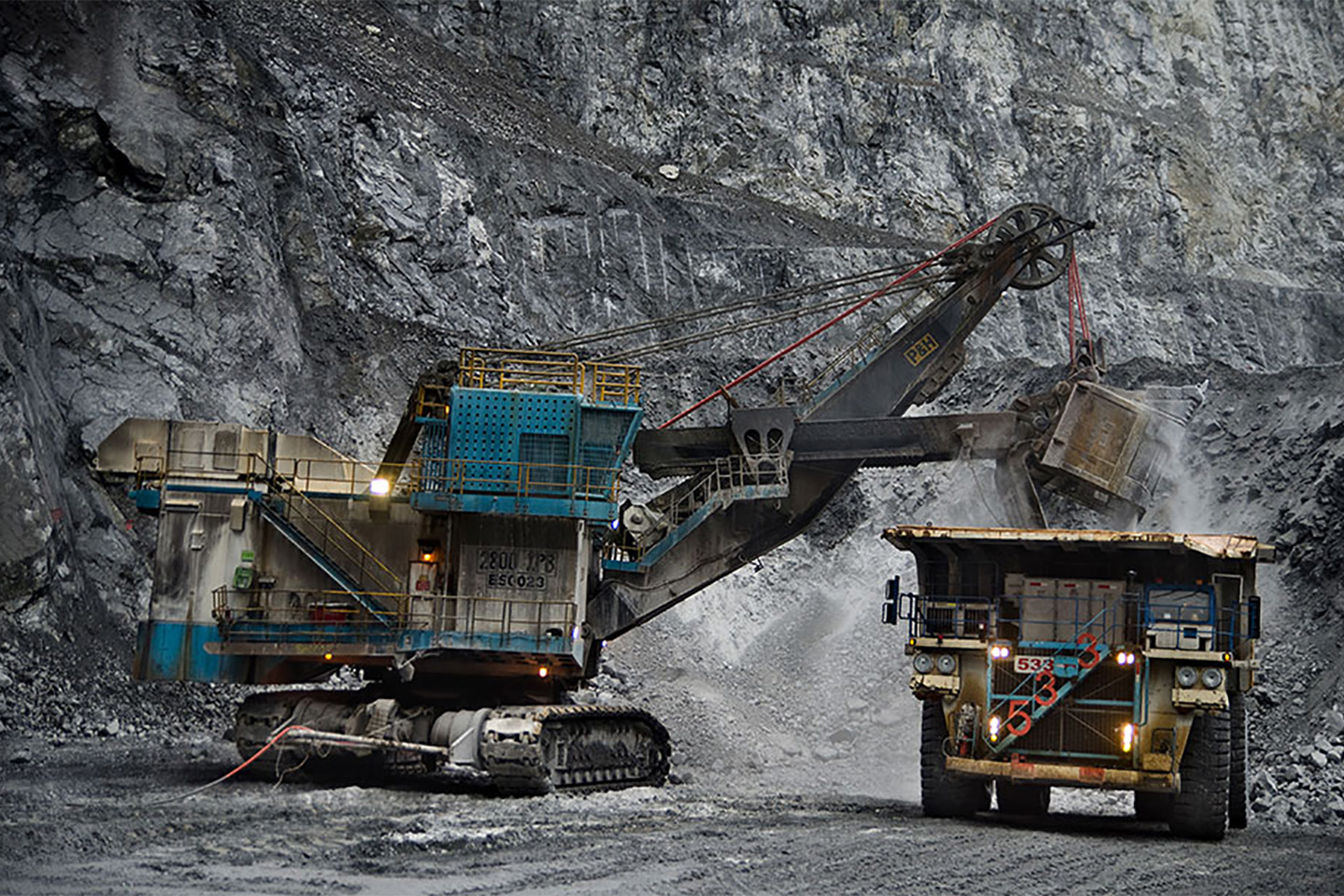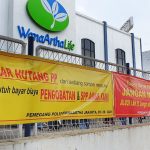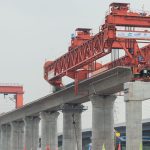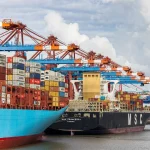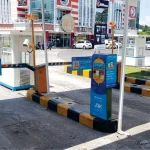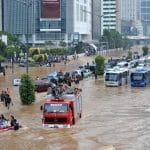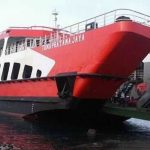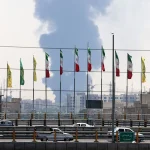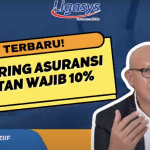Liga Asuransi – Dear readers, how are you? I hope your business is doing well.
As most businesspeople know that every organization faces risks. Sometimes the risk is inevitable in achieving success. Risk management is sometimes seen as “the department of no” — denying any project plan with potential risk.
The purpose of risk management is not to eliminate all risks. It is to minimize the potential negative consequence of risks. By working with risk managers, employees can make intelligent risk decisions to improve the chance of reward.
As a senior insurance broker, I want to discuss Third Party Liability Insurance for the coal mining industry. If you are interested in this article, please share it with your leagues so they can understand as you.
Indonesia is one of the world’s largest coal exporters and has a significant coal mining industry. The industry has been associated with various environmental and social impacts, including land subsidence, water pollution, and health impacts on nearby communities.
Understanding Third Party Liability insurance coverage concerning the coal mining operation
Overall, the risks of coal mining operations can be significant, and efforts should be made to minimize these risks through responsible mining practices and adopting cleaner energy sources.
Coal mining operations can pose significant risks to the environment and workers’ health and safety. Some of the most common risks associated with coal mining operations include:
- Accidents
Coal mining operations involve heavy machinery and equipment, and accidents can occur due to the use of these machines. Accidents can range from minor injuries to fatalities.
- Water pollution
Coal mining can release contaminants into the water, polluting rivers and other bodies of water. This can harm aquatic life and make the water unsafe for drinking or other uses.
- Soil degradation
Coal mining can damage the soil and result in soil erosion, which can have long-lasting effects on the environment. The removal of vegetation can also result in soil degradation.
- Greenhouse gas emissions
Coal mining and burning release greenhouse gases, such as carbon dioxide, contributing to climate change.
- Acid mine drainage
When water comes into contact with exposed minerals in coal mines, it can become acidic and release toxic substances, contaminating water sources.
Why do coal mining sites and plants need Third Party Liability Insurance?
Having Third-Party Liability Insurance is a legal requirement for mining companies in many jurisdictions and an ethical responsibility. It provides a safety net for the company and helps to protect the rights and interests of the affected parties.
Coal mining sites and plants require Third-Party Liability Insurance to protect themselves from legal and financial liabilities arising from damages or injuries caused to third parties such as individuals, property, or the environment.
Mining operations can pose risks to people and the environment, and accidents can occur despite safety measures. For example, coal mining operations can cause property damage, injuries or fatalities, and cause environmental pollution. In such cases, the affected parties may seek legal redress and compensation for damages caused, which can result in significant financial liabilities for the mining company.
Third-Party Liability Insurance helps mining companies to mitigate these risks by providing coverage for legal and compensation costs in the event of an accident or incident. The insurance covers the mining company against any claims by third parties for injuries, property damage, or environmental pollution caused by their operations.
Having Third-Party Liability Insurance is a legal requirement for mining companies in many jurisdictions and an ethical responsibility. It provides a safety net for the company and helps to protect the rights and interests of the affected parties.
What are the risk exposures of coal mining to third-party liability?
All risk exposures can lead to legal and compensation claims by third parties, resulting in significant financial liabilities for the coal mining company. Third-party liability insurance can help to mitigate these risks by providing coverage for legal costs and compensation claims in case of a covered incident.
Coal mining operations can pose several risk exposures to third-party liability, resulting in legal and financial liabilities. Some of the common risk exposures include:
- Property damage
Coal mining operations involve heavy equipment, drilling, blasting, and excavation, which can cause damage to nearby properties, such as buildings, homes, and infrastructure.
- Bodily injury
Using heavy machinery and equipment in coal mining can risk injury to workers, visitors, and nearby residents.
- Environmental pollution
Coal mining operations can cause air, water, and soil pollution, harming the health of nearby residents, wildlife, and vegetation.
- Land subsidence
Underground coal mining can cause land subsidence, damaging nearby properties and infrastructure, including roads, bridges, and pipelines.
- Third-party contracts
Coal mining companies often contract with third parties, suppliers, contractors, and transporters. These contracts can result in liability claims in case of a breach or failure to meet contractual obligations.
- Regulatory violations
Coal mining companies must comply with environmental and safety regulations. Non-compliance can result in legal action by regulatory agencies and compensation claims by affected third parties.
All these risk exposures can lead to legal and compensation claims by third parties, resulting in significant financial liabilities for the coal mining company. Third-party liability insurance can help to mitigate these risks by providing coverage for legal costs and compensation claims in case of a covered incident.
What kinds of third-party liability loss or damage involving heavy equipment in coal mining?
Third-party liability loss or damage involving heavy equipment in coal mining can include:
- Property Damage
Heavy equipment such as excavators, bulldozers, and dump trucks can cause damage to nearby properties, buildings, or infrastructure during mining operations.
- Bodily Injury
Third-party liability loss can arise from heavy equipment accidents, resulting in injury or death to workers or bystanders. Injuries can range from minor cuts and bruises to severe trauma or permanent disability.
- Environmental Damage
Coal mining can cause environmental damage, such as soil erosion, water pollution, or damage to wildlife habitats, resulting in claims for third-party liability.
- Breach of Contract
Third-party liability can arise from a breach of contract between the coal mining company and the third-party contractor who operates the heavy equipment. This can include claims for damages resulting from equipment failure or project completion delays.
- Negligence
Negligence can be a factor in third-party liability claims involving heavy equipment in coal mining. For example, it may be liable if the mining company fails to maintain or operate its equipment properly, causing injury or damage to a third party.
Examples of Environmental pollution caused by coal mining operations.
A few examples of coal mining operations’ environmental pollution and hazards. Mining companies need to implement effective environmental management practices to minimize these impacts and protect the health of nearby communities and ecosystems.
- Air pollution
Coal mining operations can release large amounts of dust, particulate matter, and other harmful pollutants into the air. These pollutants can cause respiratory problems, such as asthma and chronic bronchitis, and contribute to climate change.
- Water pollution
Coal mining operations can contaminate nearby water sources with heavy metals, chemicals, and other pollutants. This can harm aquatic life, such as fish and amphibians, and pose a health risk to people relying on the contaminated water for drinking, bathing, or irrigation.
- Soil pollution
Coal mining operations can disturb and contaminate the soil with heavy metals, chemicals, and other pollutants, harming vegetation and reducing soil fertility. This can impact agricultural productivity and biodiversity in the surrounding area.
- Acid mine drainage
When coal mining operations expose sulfide minerals in the ground, it can lead to acid mine drainage. This occurs when water and oxygen react with the sulfide minerals, creating sulfuric acid, which can contaminate nearby water sources and harm aquatic life.
- Land subsidence
Coal mining operations can cause land subsidence, sinking or settling the ground surface. This can damage buildings, infrastructure, and pipelines, alter water drainage patterns and create safety hazards.
Samples of Third-party liability insurance accidents and claims due to coal mining operations
Some examples of notable incidents in recent history:
- In 2015, a breach at a wastewater holding pond at the Gold King Mine in Colorado, USA, released millions of gallons of toxic wastewater into the Animas River.
This resulted in significant environmental damage, including contamination of water sources and harm to aquatic life. The Environmental Protection Agency was liable for the incident and faced multiple lawsuits from affected parties.
- In 2019, a tailings dam owned by Vale, a Brazilian mining company, collapsed in Brumadinho, Brazil. The collapse resulted in 270 deaths and extensive environmental damage, including water contamination and harm to wildlife. Vale faced numerous lawsuits and was ordered to pay compensation to affected parties.
- In 2020, a coal mine in Chongqing, China, experienced a gas explosion that killed 23 miners. The mining company was held liable for the incident and criticized for inadequate safety measures.
These incidents demonstrate the potential for third-party liability claims and the importance of effective risk management practices for mining companies.
Mining companies need adequate insurance coverage and risk management plans to mitigate the risks associated with coal mining operations.
What is Third Party Liability insurance coverage concerning the coal mining operation?
Third-Party Liability (TPL) insurance coverage for coal mining operations typically provides financial protection to the mining company if it is held liable for damages or injuries caused to third parties, such as nearby residents, property owners, or the environment. The coverage may vary depending on the policy, but some examples of the types of claims that TPL insurance can cover include:
- Property damage
If the mining operations cause damage to nearby property, such as homes, businesses, or infrastructure, TPL insurance can provide coverage for repairs or replacement costs.
- Personal injury
Suppose a third party is injured or killed due to the mining operations. In that case, TPL insurance can cover medical expenses, lost income, and other damages that may be awarded in a lawsuit.
- Environmental damage
If the mining operations cause pollution or other environmental damage, such as water or soil contamination, TPL insurance can cover cleanup costs and other related expenses.
- Legal fees and court cost
If the mining company is sued for damages or injuries caused by its operations, TPL insurance can cover legal defense and court fees.
It’s important to note that the specific coverage and limits of TPL insurance policies may vary depending on the insurer and the policy terms. It’s important for mining companies to carefully review and understand their insurance policies to ensure adequate coverage in the event of an incident.
Why do coal mining companies need the help of an insurance broker for their insurance needs?
Like any other business, coal mining companies face many risks and potential losses that can threaten their financial stability and operations. To mitigate these risks, coal mining companies purchase insurance coverage to protect themselves against losses due to accidents, property damage, liability claims, and other types of risks.
However, insurance policies can be complex, and it can be challenging for coal mining companies to identify the appropriate coverage and negotiate the best terms and prices with insurers. This is where an insurance broker can be helpful.
An insurance broker is a professional who acts as an intermediary between insurance companies and clients. Insurance brokers work closely with clients to understand their needs and identify the right insurance coverage to protect their business interests.
In the case of coal mining companies, an insurance broker can help them:
Identify the specific risks they face and the type of insurance coverage required to address them.
Assess the value of their assets, including equipment, machinery, and property, and determine the appropriate level of insurance coverage needed.
Negotiate with insurers to obtain the best terms and rates for insurance coverage.
Provide ongoing support and advice, including claims management and risk management.
In summary, coal mining companies need the help of an insurance broker to ensure they have the appropriate insurance coverage to protect their business interests and manage the risks associated with their operations.
One of the leading insurance brokers in Indonesia focusing on coal mining is L&G Insurance Broker.
For all your insurance needs, please call L&G now!
—
LOOKING FOR INSURANCE PRODUCTS? DON’T WASTE YOUR TIME AND CALL US RIGHT NOW
24-HOUR L&G HOTLINE: 0811-8507-773 (CALL – WHATSAPP – SMS)
website: lngrisk.co.id
E-mail: customer.support@lngrisk.co.id
—

